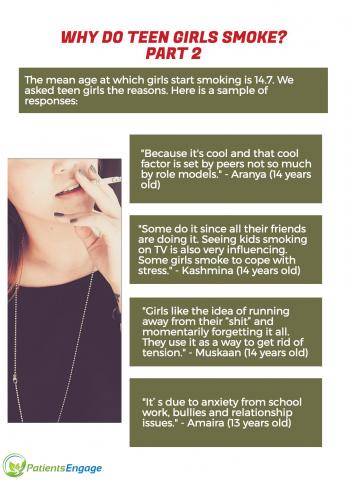
Why your child is at risk and what to say to him or her. By Dr Shital Raval Patel.
When you think of a smoker, you don’t think of a 10-year-old. But 67% of smokers in India start the tobacco habit between the ages of 9 and 15. According to the Global Youth Tobacco Survey (2006), more than one third of students aged 13 to 15 years (36.8%) reported initiating tobacco use before the age of 10 (Sinha et al., 2008).
This could be cigarettes, bidis (which have three times the amount of nicotine and more than five times the amount of tar compared to a regular cigarette stick), betel nut, gutka, pan masala…
Every day in India, around 5,500 young people start using tobacco (Patel, 1999). And 9 lakh people die every year due to tobacco related illnesses.
So what can you do to ensure your child does not become a statistic?
Firstly, why do young kids smoke or experiment with tobacco?
- Peer pressure: Most youngsters first experiment with tobacco to fit in, be one of the cool people, be part of the group etc.
- Ape a role model or parent: Many children of smoking parents try tobacco. Or they may copy a ‘hero’ – a musician or film star who smokes in real life.
- Curiosity: In order to try it once, see what it is all about.
- Easily available: Offered by friends, lying around the house if a parent is a user, shops enroute to school.


So, you know your child is smoking. What do you do?
- Keep calm and initiate conversation. Let your child know that you love and care for them.
- Do not yell. Avoid threats as this will distance the child. Most teenagers can get rebellious.
- Ask his/her peers for help: Engage the help of your child’s friend to provide peer support and encouragement.
- Provide role models: Use real-life role models like an uncle, older, ‘cool’ non-smoking cousin or respected family friend. Give examples of celebrities who have quit.
- Explain the facts: Give medical and scientific facts to prove and explain your point of view.
- Show gruesome pictures of the medical consequences: Gory photos of diseased lungs or cancer patients help drive the message home.
- Money matters: Explain how expensive the habit is and how much money can be saved. This money can be used to support something else your child enjoys.
- Athletic downsides: If the child is athletic, it’s a great way to show how tobacco use can hamper his/her game and performance. Smoking can increase the resting heart rate, decrease stamina, make one tired faster etc.
- Beauty hazards: This works great for girls when they find out that smoking can increase ageing, cause wrinkles on the face, blacken lips and stain the teeth and gum.
- Save the environment: Explain how tobacco smoke can harm plants. There are over 200 chemicals present in a single cigarette, 40 or more of which are carcinogenic. Also, how the tobacco plantation can kill the growth of other crops in the area.
- Provide incentives or goals: These can be end goals or rewards.
- Use a counsellor or helpline: Schools, colleges are now equipped with counsellors, who can help in the process of quitting.
- Pharmaceuticals: Several Nicotine Replacement Therapies like gum, patch, pills etc are available for pharmaceutical intervention, if required.
Must Read: Best Ways to Quit Smoking






